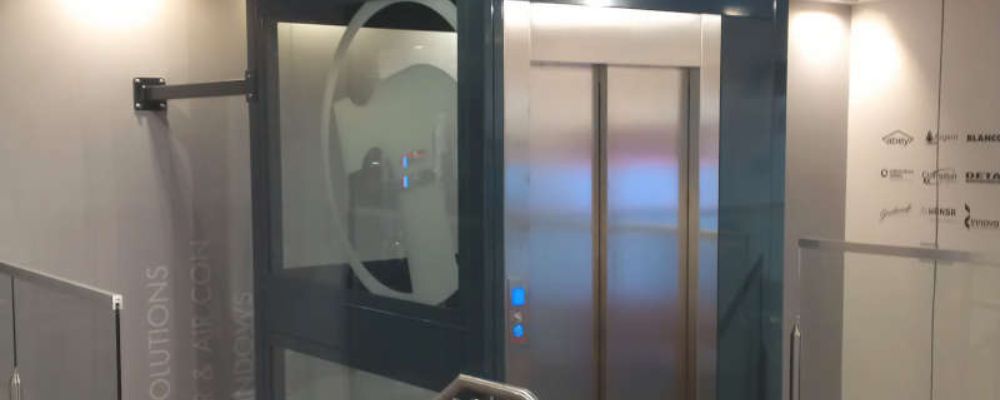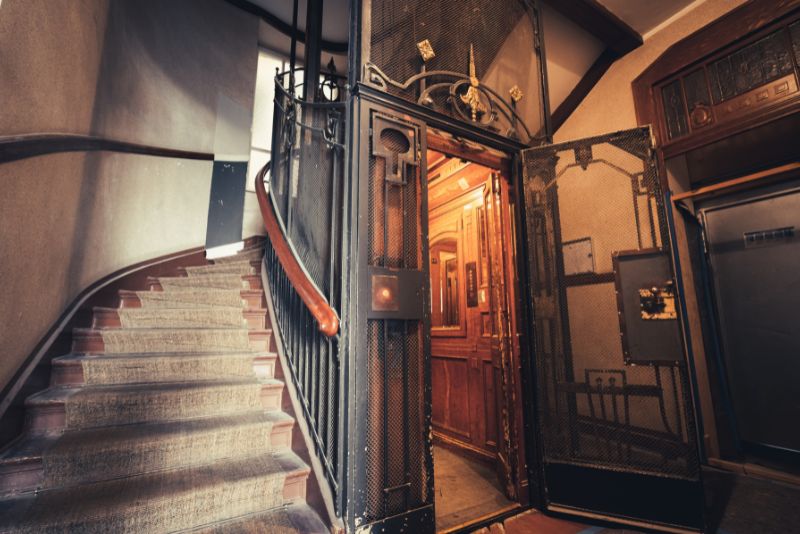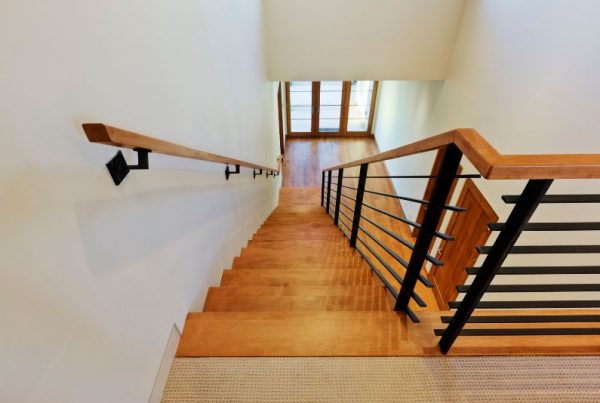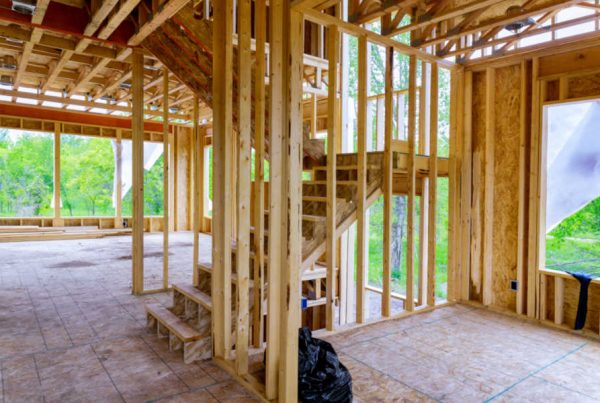The History of the Lift From Early Innovations to Modern Marvels
The lift has undergone a remarkable transformation throughout history, from primitive hemp rope elevators to the high-speed vertical vessels of the modern age.
Today, the lift is a ubiquitous, seemingly mundane component of any high-rise construction. But past innovations entailed curiosity, excitement, and controversy. The ability to effortlessly raise people or cargo has profoundly impacted our architecture, city planning, and industries.
To bring you up to speed on its uplifting evolution, we’ve compiled this detailed guide on the history of the lift.
Who Invented The lift?

Most historians believe the Greek intellectual Archimedes invented the world’s first lift. According to records from an ancient Roman architect named Vitruvius, Archimedes designed the first-known elevator in 236 BC.
This simple device relied on people or animal power to hoist a cab with hemp ropes connected to a pulley. While it pales in comparison to the modern lift, the clever new system used force amplification—or mechanical advantage—to elevate cargo more efficiently than any existing means.
Some historians believe the Ancient Egyptians invented the elevator several millennia prior. Their innovations used people, animals, or water to power rope-driven hoists to construct the pyramids and irrigate crops. However, many argue these early Egyptian inventions classify as cranes.
In 80 AD, the Romans integrated the technology into the Colosseum. Around 25 early elevators could lift to 270 kg each, enough to carry two adult lions. It took eight men to safely elevate their ferocious cargo up to seven metres from the ground.
The Evolution of the Elevator
These early innovations paved the way for other civilisations to expand upon the idea.
Pre-industrial lifts
In 1000 AD, Andalusian engineer Ibn Khalaf al-Muradi wrote of similar contraptions in the Book of Secrets. According to his accounts, invaders in Islamic Spain used elevators to hoist battering rams that would destroy opposing fortresses.
Over in France, in 1742, King Louis XV ordered his minions to construct a hand-powered lift with a “flying chair.” The ostentatious device was primarily used to raise his mistress onto the balcony of the Chateau de Versailles.
Russian mechanic Ivan Kulibin invented the first screw-drive lift in 1793, which was subsequently installed in St Petersburg’s Winter Palace. The screw-drive lift converted rotational motion into a linear movement to achieve a superior mechanical advantage.
Elevators in the Industrial Revolution

In the 18th and 19th centuries, large-scale manufacturing increased the need to lift heavy raw materials like coal and lumber. The onset of the Industrial Revolution would see elevator technology reach dizzying new heights.
Coal miners began using steam-powered lifts to haul bulky resources up mine shafts, while factory workers employed the technology to transport cargo between floors.
In 1835, a British company called Frost and Stutt invented the Teagle, an innovative belt-driven lift using a counterweight to generate additional power.
English engineer Sir William Armstrong invented the first hydraulic crane in 1846. Following Pascal’s law of fluid mechanics, his contraption used a pump to supply water at a variable pressure to an enclosed cylinder. His countrymen first used the technology to load cargo at the Tyneside docks.
Safety concerns meant Industrial Revolution-era elevators were primarily used for cargo. One notable exception is the “Ascending Room,” a novel steam-powered tourist attraction invented by London-based architects Burton and Hormer. Inaugurated in 1829, this crowd-pleasing attraction lifted participants up the purpose-built London Colosseum to provide sweeping city views.
New York inventor Henry Waterman helped improve the safety and efficiency of the passenger lift when he designed the standing rope control elevator in 1850. While previous lifts relied on trained operators to function, this innovation put the passengers in control. A complex system of pulleys mounted at the top of the shaft allowed passengers to pull on a rope to move the cart.
In 1852, American industrialist Elisha Otis invented the first safety lift, which incorporated a mechanism to prevent the cart from falling should its cable snap. Two years later, he unveiled his invention at the New York Exhibition to great fanfare.
Incorporating Otis’ invention, developers installed the world’s first commercial lift on Broadway’s Haughwout Department Store in 1857. Manhattan’s eight-story Equitable Life Building, constructed in 1870, is believed to be the world’s first office building to use a passenger lift.
A German electrical engineer named Werner von Siemens invented the first-ever electric-powered lift in 1880. In 1887, US inventor Alexander Miles helped modernise the technology by incorporating automated doors. This addition not only added convenience; it also became an essential safety feature still in use today.
The Modern Lift

Despite continued improvements, niggling safety concerns made passengers reluctant to use elevators throughout the early 19th century. Attitudes began shifting during a 1945 New York elevator operator strike, which spurred the introduction of an emergency stop button and telephone.
Passengers rarely think twice before hopping into a lift these days. Per kilometre travelled, the lift is now the safest form of transportation on Earth—you’re far more likely to injure yourself taking the stairs.
Modern innovations have also made the lift more efficient. An inverter-controlled gearless drive system powers most elevators in Australia and abroad, allowing them to move faster than ever before.
Remember Otis’ world-first passenger lift in New York? That primitive 1857 invention could ascend at a snail-paced 12 metres per minute. Compare this figure to today’s quickest lifts, which can travel at speeds exceeding 12 metres per second.
In the 1980s, Toshiba advanced the elevator evolution with breakthroughs in thyristors (solid-state semiconductors) for inverter control. By incorporating insulated gate bipolar transistors (ICBT), the company learned to increase the switching frequency and reduce a motor’s magnetic noise. This technology eliminated the need for a filter circuit, enabling manufacturers to create smaller elevators.
The compact stature enabled architects to build lifts in increasingly smaller spaces, which promoted their proliferation across the globe. Statistica estimates there were 18 million elevators in operation worldwide in 2021. All those lifts transport the equivalent of the entire world’s population in only three days.
Widespread elevator use has had a significant impact on our cityscapes, with the number of buildings over 200 metres tripling since the year 2000.
Before lifts became a given, ground-floor offices and apartments were more desirable (and expensive) as they didn’t require climbing stairs. Nowadays, however, the lofty floors command sky-high prices because they’re easily accessible and afford breathtaking views. There’s a reason you’ll fork out more for that sought-after penthouse suite.
The Advantages of Residential Lifts

Whether in a private home or an apartment block, the modern residential lift provides a multitude of benefits.
The most obvious advantage is you no longer need to negotiate stairs. Even the most able-bodied residents find scaling a staircase a chore, and the prospect becomes impossible (or downright dangerous) for the mobility impaired. Residential lifts also enhance property value, allowing you to recuperate a significant portion of the costs.
Technological advancements mean you can now install a residential lift in a typical suburban home. Wheelchair platforms allow older or mobility-impaired Australians to regain their independence and remain living at home.
Modern home lifts don’t occupy excessive space or ruin your interior aesthetic. Some residential lifts are as small as a wardrobe, and you can customise the style to complement your interior design.
The Advantages of Commercial Lifts

From office blocks to shopping malls, the commercial lift is a valuable asset for every large Australian business.
Rapidly transporting people between floors improves operational efficiency and promotes accessibility for customers with reduced mobility. Commercial lifts also require less room than a traditional staircase, which enables a business to better utilise its available space.
All Australian elevators must adhere to strict safety standards, which means injuries are almost unheard of. When compared to the stairs, a lift reduces the liability associated with slips and falls.
Moreover, modern commercial lifts can be customised to complement your property’s design and use energy-efficient systems to lower utility bills.
The Advantages of Freight Service Lifts
Whether you’re managing a warehouse or a factory, a freight service lift lets your team transport materials safely and efficiently.
Carrying bulky goods upstairs is not only slow; the process is fraught with risk. An injury sustained on the job could lead to a costly worker’s compensation claim.
Freight lifts have been designed with safety in mind, including custom features such as non-slip floors, sturdy doors, and intricate locking mechanisms. A wide range of options caters to businesses with varying requirements, including micro-freight lifts capable of handling loads up to 1,500kg.
Axis Lifts: The Elevator Experts in South East Queensland
With an expert team boasting 90 years of combined industry experience, Axis Lifts has become the leading elevator installer in Brisbane and South East Queensland. We offer a wide array of residential, commercial, wheelchair platform and freight service lifts, each fully customisable to suit your specific needs.
Every Axis lift comes with a 12-month warranty, including two follow-up visits. And with more qualified technicians on-call than any other Queensland lift provider, we can offer unrivalled response times.
Get in touch with us today for an obligation-free quote.




